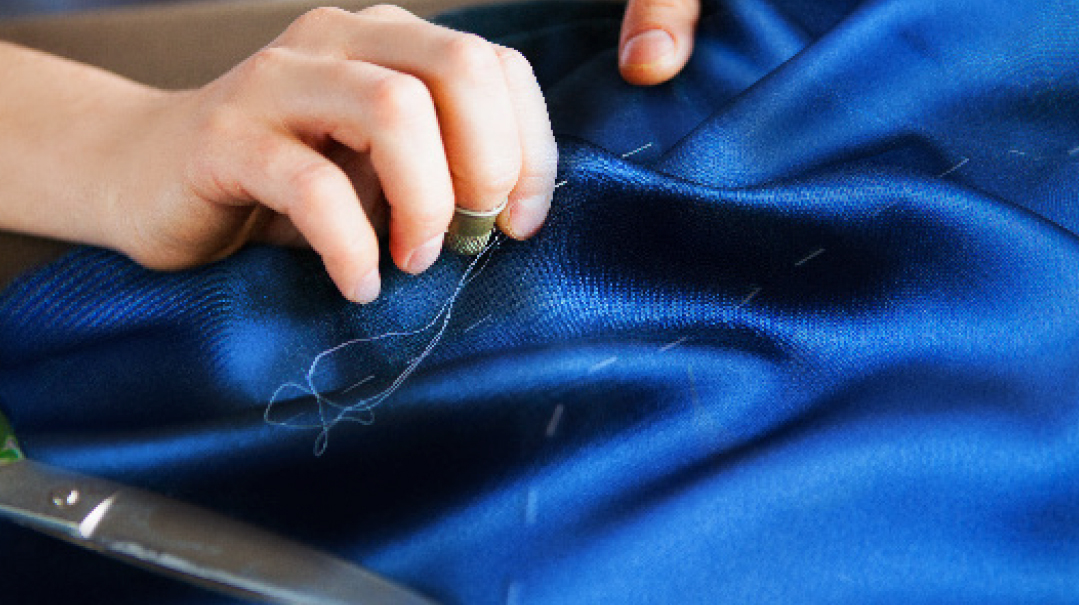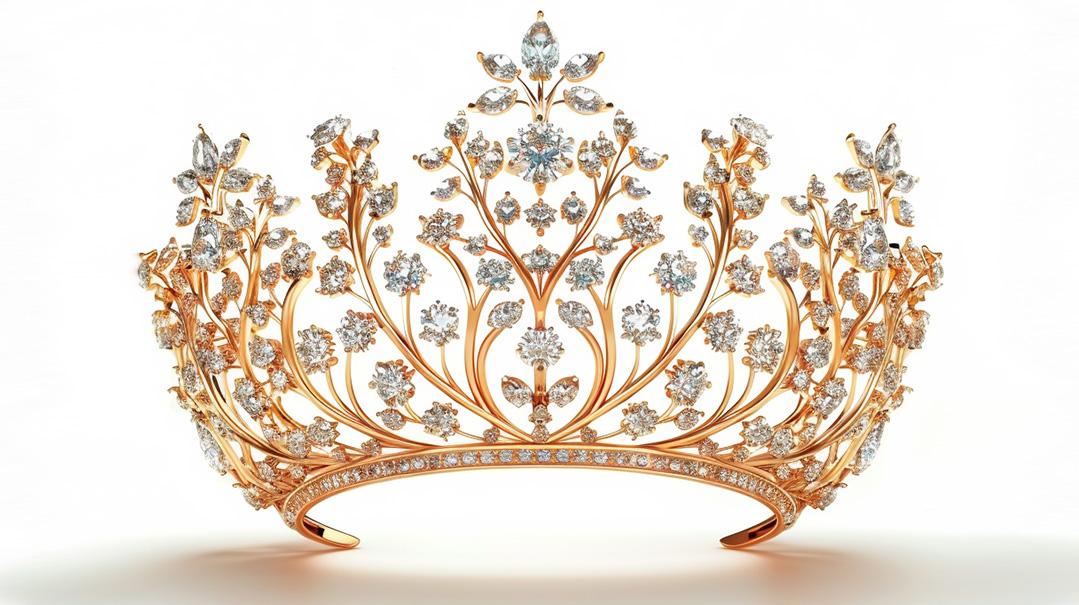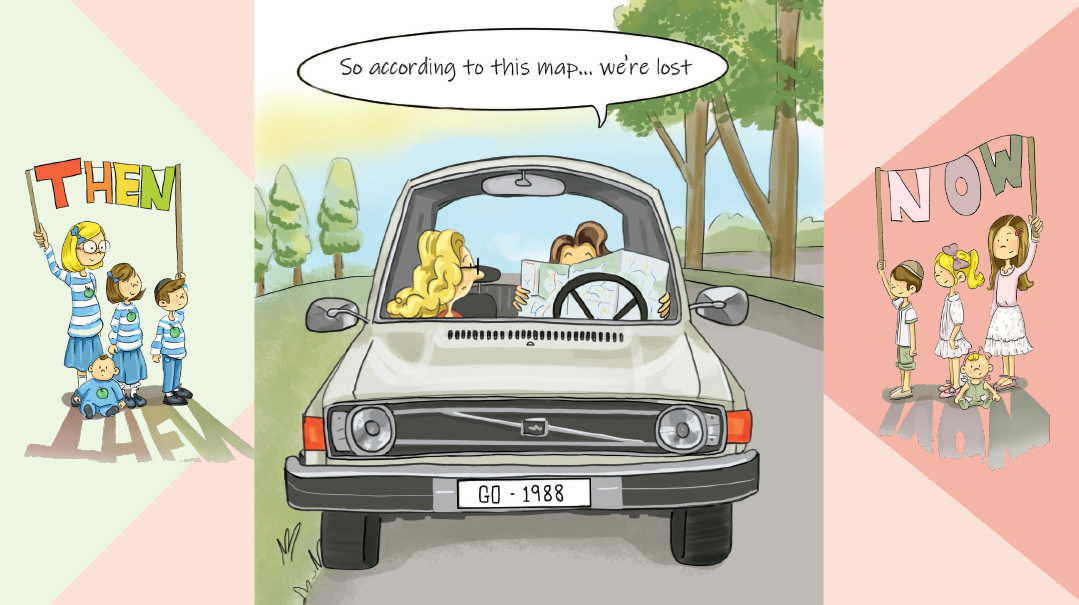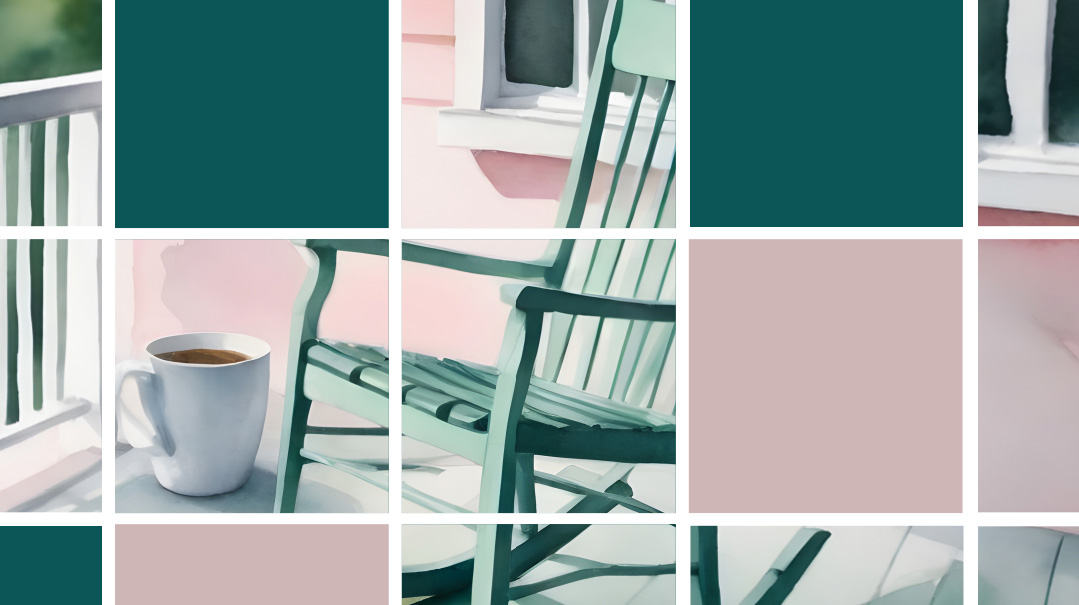Tapestry of Majesty
| May 26, 2020Rebbetzin Chaya Ausband lived with faith, intense joy, and boundless appreciation for Torah

She was a scion of Torah royalty, wife of a Rosh Yeshiva, and mother of a large and illustrious family. Yet Rebbetzin Chaya Ausband was, first and foremost, a mechaneches.
As head of Yavne Teachers Seminary in Cleveland, Ohio, she taught generations of young women how to learn a pasuk in Chumash, how to dissect a Rashi, how to analyze a perek of Navi. More than that, she taught them about the dignity and greatness of a life completely devoted to Torah.
For these American girls, she served as a link to the pre-war European Torah giants. Her influence on their lives was so profound that when she passed away two weeks ago at the age of 96, her talmidos from decades ago felt bereft.
Although her greatness was impossible to fully penetrate – an “ishah gedolah” was the way many describe her — in interviews with talmidos and family members, several qualities were mentioned repeatedly. Here’s a small glimpse of what she embodied.
Chashivus HaTorah
Rebbetzin Ausband – or “Morah,” as her students called her, with the grammatically correct emphasis on the final syllable – was a brilliant intellectual who loved learning Torah. More importantly, at her core was a fathomless respect for Torah and Torah scholars.
This love was embedded within from the youngest age. Morah had a deep awe of her own father, Rav Avrohom Yitzchak Bloch, Rosh Yeshiva of Telshe in Europe. Mrs. Nechama Burnham, a Yavne student, recalls how Morah would describe bringing cups of tea to her father and his chavrusa. “She told us she’d be shaking so much, she was scared she’d drop the tea.”
That reverence continued in her relationship with her husband. Though Morah was a strong and highly-educated woman, her respect for her husband as a talmid chacham was absolute. Her children have a copy of her diary, in which she wrote, “People think I make the decisions in this house, but it’s not true. I always let my husband make the decisions.” Though she had plenty of strong opinions, she deferred entirely to her husband.
“She always used to say that she can’t thank Hashem enough for the fact that her husband learns Torah and that her children learn Torah,” relates Mrs. Penina Green, a Yavne student. “She used to daven, fast, and take kabbalos upon herself as a zechus for her children’s success in Torah learning.”
She respected anyone learning Torah, whatever his age. One day, a few bochurim from the yeshivah came to the Ausbands’ house, and the Rebbetzin noticed that one young bochur’s jacket button was missing. She told him to come back later so she could sew it for him. Of course, he didn’t; how could he ask the 80-year-old rebbetzin to sew his button?
When he didn’t show up, she called for him. “I can’t have such a distinguished melumedes sew my jacket button!” he told her. But she insisted: “My tafkid in this world is to serve lomdei Torah. It’s my privilege.”
Thirst for Growth
Rebbetzin Ausband was a brilliant woman with an incredible scope of Torah knowledge. Yet, despite her natural gifts, she never felt it was enough. She had an unquenchable thirst to continue learning and growing.
“I remember coming to Morah’s house and seeing her sitting and learning with her sons,” recalls Mrs. Toby Friedman, a Yavne student. “Rav Avraham Ausband has said he considers his mother his rebbe for Chumash and Navi.”
She connected to others through Torah. “She invited me to her house one Shabbos before Pesach, and during the afternoon, I took out my notes,” says Mrs. Aliza Feder, another Yavne student.
“She asked me what I was studying, and I was a little embarrassed to tell her that it was Megillas Esther — it was for a make-up test. But right away, she asked me to read my notes out loud so she could learn it, too. It didn’t matter that Purim had passed – for her, all learning was enjoyable.
“Many years later, when I visited her in Lakewood — in her later years, she went to live with her daughter — the first thing she did was pull out a Chumash with Ramban and start learning with me.”
When Morah was already in her 90s, she decided to start learning the issurim associated with speaking lashon hara. And she’d ask her daughter to test her on it.
Around that time, she went to visit her son, Rav Avraham, Rosh Yeshiva of Telshe in Riverdale. The next morning, her grandson was concerned by how tired she looked.
“Didn’t you sleep well, Bubby?” he asked.
“I saw a Mesillas Yesharim sitting on the night table in my room,” Morah answered, “and I opened it. I just couldn’t put it down all night.”
Dignity
Telshe was a place of malchus shel Torah, and Rebbetzin Ausband embodied the concept, living her life with regal dignity.
“Nowadays, we gravitate towards teachers who are relatable,” says Mrs. Aliza Feder. “Morah was not relatable; she lived in a parallel universe, like someone straight out of a gadol story.
“I remember how she told us that when she was growing up, it was normal for girls to know Tanach by heart. She said it so matter-of-factly. She had high standards for us, and we were in awe of her.
“Our classrooms were in the basement of a shul, and when it was time for her to teach, one girl would be posted upstairs to alert us to when she was coming, so we’d already be standing when she walked in. That was the kind of reverence she inspired.
“Even years later, when I called her on several occasions, I always made sure to stand while talking to her on the phone. How could I sit when speaking to Morah?”
Each Yavne student was invited to Morah’s house once a year for Shabbos, and it was like going back in time. “Her husband, the Rosh Yeshiva, sat like a king at the head of the table, and the family all sat like soldiers, serious and dignified,” Mrs. Penina Green relates. “There was no small talk, only words of Torah. I still remember how they bentshed – slowly, word for word.”
“Watching her parent was a real lesson,” says Mrs. Toby Friedman. “When I was in Yavne, her children were still young. I remember sitting at her Shabbos table once, and one of the children started acting up. The older siblings began disciplining her, until Morah said firmly, ‘Yesh lah Ima achat. She has one mother.’ That instantly quieted them down.”
Dignity was present in the classroom as well. Rebbetzin Ausband wouldn’t let the girls sit with their legs crossed when they learned Chumash. How could you sit in such a casual, undignified posture while learning Torah?
“The Yavne graduation was unique,” describes Mrs. Etta Einstadter. “There was perfect decorum; the tone was formal and serious. First the Rosh Yeshiva would speak, then Rebbetzin Ausband, and then each girl got up to speak.
“This tone was reflective of the seminary’s philosophy — and of Telshe in general. The way they looked, the way they spoke, the way they carried themselves; they were very dignified, very principled, very impressive.”
Rebbetzin Ausband would teach lessons from Shiurei Daas, written by her grandfather, Rav Yosef Leib Bloch. “I remember how she taught us that malchus meant being in complete control of every single action and reaction,” says Mrs. Aliza Feder. “That was exactly how Morah lived.
“Everything she did was cheshboned — even her tears. She spoke precisely and succinctly, with no extra words. She had perfect balance and exceptional menuchas hanefesh.”
Accepting Others
Very often, a genius living on such a high spiritual level has trouble relating to “regular people.” Yet, Rebbetzin Ausband is described by her talmidos as being very real, feet planted firmly on the ground. She was able to understand where they were coming from — even as she never stopped expecting excellence from them.
“With Morah, we knew we could be ourselves,” relates Mrs. Nechama Burnham. “She understood who you were and what you needed.
“Once, one of the students wanted to watch a Disney movie, or something of that sort. Morah’s response: ‘What, you still need to do that? You’ll eventually grow up and grow out of this.’”
Unlike other seminaries, Rebbetzin Ausband had an open admissions policy, especially in the early years. “She’d accept any girl, even those who might not have been accepted elsewhere,” says Mrs. Etta Einstadter, long-time assistant to Rebbetzin Ausband. “Her one criterion was that the girl must want to be there. As long as the girl had the ratzon, Rebbetzin Ausband taught her wholeheartedly.”
She also enjoyed lighter moments with her students. “Morah had a great sense of humor,” says Mrs. Penina Green. “I have a picture of her taken during a Purim skit that we put on, and she has tears of laughter streaming down her face. Even though she was extremely dignified, she had a lighter side.”
She offered practical advice to her students. “She told us how important it was to hire as much household help as possible,” recalls Mrs. Rivka Press Schwartz. “She’d say, ‘It’s a mitzvah to raise your children; it’s not a mitzvah to clean up after them.’ She told us that even after the war, when she had nothing — not even a stove — she still had cleaning help.”
Emes
Rebbetzin Ausband was scrupulously honest in action and in speech. As one student put it, she wasn’t afraid to “tell it like it is.” Yet, her frankness was always tempered with love.
“Once, when Morah was giving me mussar about something,” relates Mrs. Aliza Feder, “she told me frankly, ‘We had our hesitations about accepting you’ — my high school records were nothing to write home about — ‘but we took you because we heard you’re a mekabeles.’ She told it straight, but it was well-taken because along with the mussar, she built you up.
“At the same time,” she adds, “there was nothing better than getting a compliment from Morah, because you knew it was 100% true.”
“I lived in Cleveland after I got married; my husband learned in the yeshivah,” relates Mrs. Nechama Burnham. “I still remember one Simchas Torah, right after I’d given birth to my sixth child. I decided to walk to the yeshivah, bringing my ten-day-old baby with me.
“Morah, who grew up in a time when a kimpeturin didn’t leave her home for a month, disapproved. She came over and said, ‘I love all my talmidos – even the foolish ones.’
“Her big heart could encompass everyone, and her love for her talmidos made us feel so secure that her mussar was music to our ears, evidence of her love.”
Rebbetzin Ausband’s honesty also precluded ever attempting to whitewash reality. “I’ll never forget a conversation we had about hair-covering,” says Mrs. Rivka Press Schwartz. “A student from Lakewood asked how women in pre-war Telshe covered their hair. ‘Most of them didn’t,’ she said, to my classmate’s astonishment. It didn’t mean she condoned it, but she also wasn’t going to rewrite history.”
Deep Emunah, Deep Joy
As a Holocaust survivor, Rebbetzin Ausband went through unimaginable suffering early in life. Yet she emerged not only with her deeply embedded trust in Hashem intact, but, even more remarkably, with an intense joy and zest for life. She lived with a constant sense of gratitude towards Hashem, for giving her the zechus to learn and support Torah.
Morah was a small child when her grandfather, Rav Yosef Yehuda Leib Bloch, was niftar. She described how he called all of his grandchildren together and made them promise to always be mekadesh Shem Shamayim in their lives.
“Morah was only six years old,” Mrs. Penina Green notes, “and didn’t understand what this meant — but she promised, and that’s how she lived until the end of her life.”
Morah had a unique approach to the horror that was the Holocaust. Mrs. Toby Friedman relates: “I remember how astounded I was when Morah commented about her war experiences: ‘I would never want to experience those events again. But I also wouldn’t give them away – not even for a million dollars.’”
The night before her father was killed by the Nazis, Morah sat up with him learning the Rambam’s Hilchos Kiddush Hashem. She often said that she wondered why she wasn’t zocheh to be a korban like her father, dying al Kiddush Hashem. She’d conclude that she had her consolation in the fact that she’d gone on to raise a Torahdig family, and this was her way of being mekadesh Shem Shamayim.
“Morah didn’t speak much about herself,” Mrs. Aliza Feder says. “So when, during a panel discussion, she made reference to the high point of her life, we all leaned forward in curiosity. What could it be? I’ll never forget what she told us.
“The Nazis had rounded up everyone in Telshe, and they all knew that they were about to be killed. Morah’s father, the Rosh Yeshiva, spoke emotionally to the entire community about doing teshuvah. Then they all collectively said Vidui, closed their eyes, and screamed out ‘Shema Yisrael.’ They were ready to die Al Kiddush Hashem.
“Morah was saved. But this experience, she said, was the highlight of her life.
“I remember we sat there staring at her in disbelief. This was the highlight? She seemed surprised that she even needed to explain it. ‘The d’veykus!’ she exclaimed. ‘We were so close to Hashem, all we wanted to do was to die Al Kiddush Hashem!’ Her face was glowing recalling that moment.”
Along with the pinnacles, she was also able to appreciate the smallest things. “She had such a joyous attitude towards life,” recalls Mrs. Nechama Burnham. “She appreciated the things that are so often taken for granted. Everything was wonderful. Simple food, for example, she savored like it was gourmet — because she was a connoisseur of life. I remember her telling us that when she was a child, they had the same thing every day for breakfast: Bread and eggs, bread and eggs, bread and eggs. ‘But,’ she’d say with a smile, ‘It was so good!’”
When her husband had dementia later in life and Morah spent her time caring for him, someone once commented about how hard this must be for her. She replied, “I’m so happy! I’m so thankful for every day that I can still be with him!”
She would add, in what was a unique approach to life challenges, “he tells me that Hashem hasn’t forgotten me, that he’s still sending me nisyonos to help me grow!” She took it as a Heavenly vote of confidence.
Consummate Educator
Rebbetzin Ausband took the greatest pride in being a mechaneches. She felt strongly that we must raise our girls to want husbands who will learn Torah — and that the best way to do so was to teach them Torah, so they’d learn to appreciate it. She believed deeply in women’s Torah education, and demanded the highest standards of excellence from her talmidos.
“Rebbetzin Ausband’s whole life was focused on the sacred mission of teaching Torah to girls,” says Mrs. Etta Einstadter. “She had a very specific educational approach. She was opposed to the modern trend of teaching just one parshah a year; in Yavne, they’d cover the entire Torah, all five Chumashim, in two years. She didn’t believe in skipping anything, even the ‘drier’ or ‘more problematic’ parshiyos. And she’d expend massive effort in teaching the girls to understand Rashi properly.
“There were no hashkafah classes in Yavne, no having a talk about learning in kollel. Rebbetzin Ausband believed that there was no such thing as hashkafah separate from Torah learning. She’d teach Torah, and the hashkafah would be absorbed through the learning itself.
“She didn’t need to use today’s buzzwords, to talk about concepts like chashivus haTorah or respecting your husband, because she exuded it. Anyone who saw her understood instantly what that meant.”
She wanted the girls to think things through. “On top of the blackboard, in big letters, were the words ‘lo habayshan lomed,’” describes Mrs. Penina Green. “Though it might have been intimidating to learn from such an ishah chashuvah, we were encouraged from the outset to ask questions.”
“Morah gave us a derech halimud,” says Mrs. Toby Friedman. “She didn’t just teach us Rashi and Ramban — she taught us how to learn them independently, so that we could continue learning even after we left seminary. And she demanded excellence; she gave very hard tests!
“I still have a notebook from my years in seminary, in which Morah wrote, ‘Don’t be nichbah el hakeilim [a quote from Sefer Shmuel describing Shaul hiding to avoid kavod.] You must use your kochos to contribute to Klal Yisrael.’ I was very shy, and Morah understood what I needed to hear to help me grow.
“I remember calling her years later, and telling her how much I missed having a good Chumash class. Morah didn’t skip a beat. “So start giving your own class!” she said. Years after I’d graduated, she was still working to instill confidence in me. She was the ultimate teacher.”
Royal Roots
Chaya Bloch was born in 1923 in Telshe, Lithuania, the third daughter of Rav Avraham Yitzchak and Rassia. She was a scion of Torah royalty, the daughter, granddaughter, and great-granddaughter of Telshe Roshei Yeshiva.
Her grandfather, Rav Yosef Leib Bloch, took over leadership of the yeshivah and kehillah from his father-in-law, Rav Eliezer Gordon, in 1910. He expanded the Telshe educational network, opening the Teacher’s Seminary for men in 1925, a girls’ Gymnasium in 1927, and, three years later, the Yavne Women’s Teacher’s Seminary. Chaya learned in the Yavne girls’ school, part of the Lithuanian network of girls’ schools which preceded Sara Schenirer’s Polish Bais Yaakov.
Upon his father’s death in 1929, Rav Avraham Yitzchak became the head of the Telshe network. Under his leadership, the yeshivah grew even larger, attracting hundreds of bochurim from across Europe – until it was abruptly brought to a tragic end.
On the 27th of Sivan, 1941, the Nazis entered Telshe. Just three weeks later, on the 20th of Tammuz, they murdered every Jewish man in the city. The women were herded to a different locale. The Nazis eventually separated the young women from the old, taking the younger women to a ghetto in Telshe. Chaya managed to bring her mother along, saving her from the fate of the elderly women, who were murdered.
In the ghetto, Rebbetzin Bloch bribed a non-Jew to spirit Chaya, her cousin Naomi Stein, and another girl away to a larger ghetto, where it was assumed they’d be safer. Chaya stayed in the larger ghetto for three and a half years until she was transferred to a labor camp.
Rebbetzin Ausband would later say that the reason she managed to survive the camp is because she focused on caring for her cousin, Naomi, who was weaker than she.
After the war, Chaya returned to Telshe, but there were no survivors to be found. She wasn’t sure what her next step should be — until she got a postcard from a former talmid of her father.
Rav Aizik Ausband had escaped to Russia along with 15 other talmidim at the beginning of the war. At the war’s end he managed to escape Communist Russia and came to Vilna. There, he was appointed rav, and set up a house that he used to shelter refugees whom he’d helped to escape the Iron Curtain. When he heard that one of the Bloch daughters had survived, he sent a message to her to come to Vilna.
When she got there, Rav Aizik showed her a drawer with money and told her to take whatever she needed.
After being caught with the false papers he used to help the escaping Jews, Rav Aizik had to escape himself. Together with Chaya and several others, they made their way to Lodz. There, Rav Aizik and Chaya became engaged.
They went on to Paris, where they married in 1946. They stayed for a year, before receiving affidavits to travel to America. Their destination: Cleveland, Ohio, where two of Chaya’s uncles had already settled and reopened a branch of the Telshe Yeshiva.
Rav Aizik joined the yeshivah staff, while Rebbetzin Ausband taught in the Hebrew Academy. She also began to raise her family — nine children in all. As a Holocaust survivor, Rebbetzin Ausband was determined to have a large family. Someone who wasn’t used to seeing such large families in America once commented on how many children she had. She responded, “I wish I had another nine!”
In 1964 she founded Yavne Seminary, where she’d go on to educate generations of young women for the next five decades. She didn’t stop teaching until her husband’s petirah eight years ago. Three years later, Rebbetzin Ausband left Cleveland, moving to her daughter’s home in Lakewood, where she lived for her remaining years. Tihe zichrah baruch.
(Originally featured in Family First, Issue 694)
Oops! We could not locate your form.












